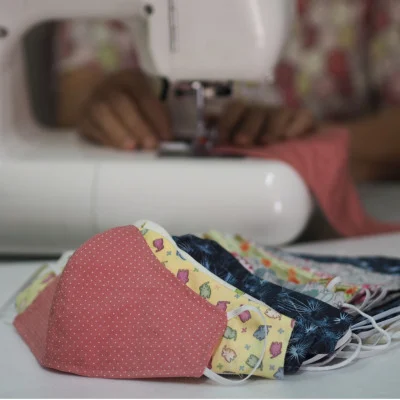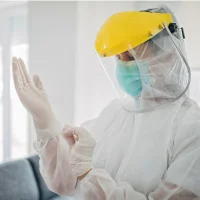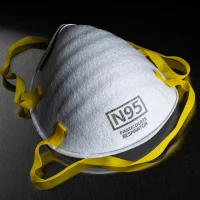Wearing of face masks in public is now part of basic health protocols meant to prevent coronavirus spread. The expected shortages in supply of surgical masks, however, have led many people to use homemade masks and mask alternatives (eg, bandanas or neck fleece). Since the efficacy of these improvised masks has not been proven, researchers from Duke University have proposed a simple optical method to measure the effectiveness of such masks in reducing the spread of respiratory droplets during regular speech (Fischer et al. 2020).
You might also like:WHO Guidelines on PPE Use for COVID-19 are Questioned
The Duke team's proof-of-concept studies tested 14 commonly available masks or mask alternatives with one speaker, while a subset of these masks were tested with four speakers. These tests aimed to compare the efficacy of different masks by estimating the total transmitted droplet count.
Overall, their findings show that some mask types are nearly as effective as standard surgical masks in suppressing transmission of droplets. However, as noted by the researchers, some mask alternatives (eg, neck fleece or bandanas) provide very little protection.
The researchers say their experimental setup is simple and can easily be built and operated even by non-experts. This setup features a laser beam that is expanded vertically by a cylindrical lens and shined through slits in a box. There's a hole in front of the box for the speaker. Droplets that propagate through the laser beam scatter light, which is recorded with a cell phone camera (located at the back of the box). A simple computer algorithm is used to count the droplets in the video.
The researchers measured a droplet transmission fraction ranging from below 0.1% (fitted N95 mask) to 110% (fleece mask) relative to the control trials – where the speaker did not wear a protective mask.
As shown in these experiments, a mask acts as a temporal low pass filter, smoothens the droplet rate over time, and reduces the overall transmission. The research team also observed that, when speaking through some masks – the neck fleece, in particular – the largest droplets tended to be dispersed into a multitude of smaller droplets.
"Considering that smaller particles are airborne longer than large droplets (larger droplets sink faster), the use of such a mask might be counterproductive," the researchers explain.
These limited demonstration studies, according to the Duke team, show that the proposed optical method is effective in measuring the efficacy of masks for retaining droplets emitted during speech for droplet sizes larger than 0.5 μm. The measurement method can help improve evaluation of different mask types before making purchase decisions.
Furthermore, these proof-of-principle experiments can guide
future studies – with a larger cohort of speakers – in evaluating mask
performance under a variety of conditions that affect the droplet emission
rate, such as volume of speech, speech patterns and other variables.
References:
Fischer EP et al. (2020) Low-cost measurement of facemask efficacy for filtering expelled droplets during speech. Sci. Adv. 7 August; eabd3083. DOI: 10.1126/sciadv.abd3083


![Tuberculosis Diagnostics: The Promise of [18F]FDT PET Imaging Tuberculosis Diagnostics: The Promise of [18F]FDT PET Imaging](https://res.cloudinary.com/healthmanagement-org/image/upload/c_thumb,f_auto,fl_lossy,h_184,q_90,w_500/v1721132076/cw/00127782_cw_image_wi_88cc5f34b1423cec414436d2748b40ce.webp)





